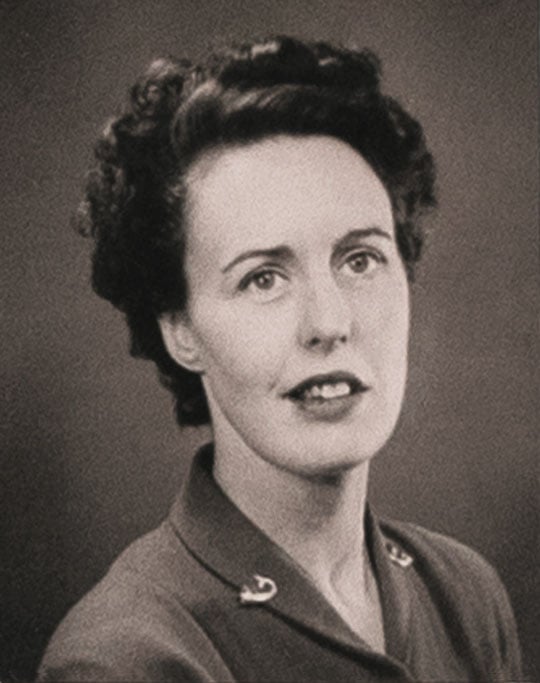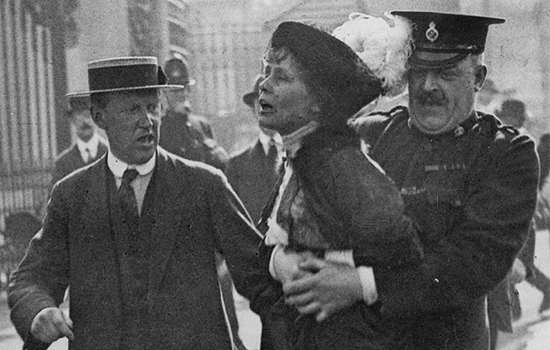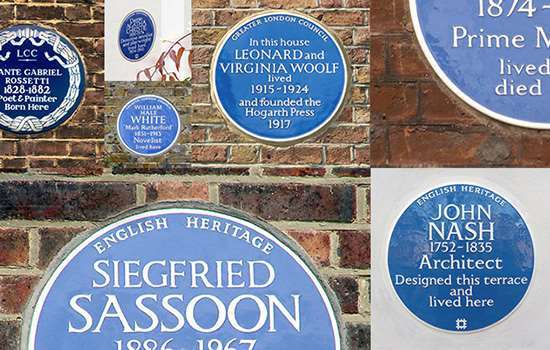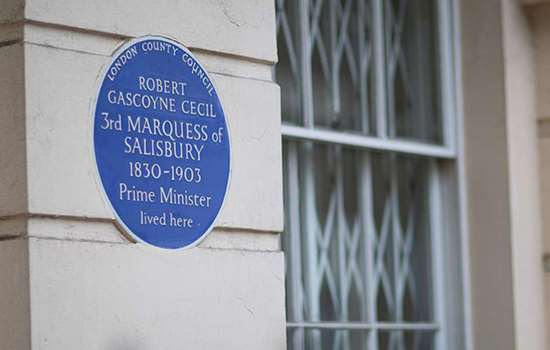PYM, Barbara (1913–1980)
Plaque erected in 2025 by English Heritage at 108 Cambridge Street, Pimlico, SW1V 4QF, City of Westminster
All images © English Heritage
Profession
Novelist
Category
Literature
Inscription
BARBARA PYM 1913–1980 Novelist lived here 1945–1949
Material
Ceramic
Barbara Pym was an acclaimed novelist. She is commemorated with a blue plaque at 108 Cambridge Street, where she lived when her first novel was published and which inspired the setting of her best-loved novel, Excellent Women.

Barbara Pym was born in June 1913 in Shropshire, the elder of two daughters in a middle-class family. She attended boarding school, where she began to write fiction, then studied English at St Hilda’s College, Oxford University, where she fell in love with 17th-century poetry. A romance with fellow student, Henry Harvey, caused Pym much heartache, though they remained lifelong friends.
In 1935 Pym visited Germany on a trip organised by the National Union of Students. She found herself ‘impressed’ by the Nazis and fell in love with a SS officer. On a return visit, she admired a speech given by Hitler. She later regretted her youthful flirtation with Nazism.
Writing and wartime
In 1934 Pym started writing her first novel. Harvey’s close friend and fellow writer Robert ‘Jock’ Liddell encouraged her to keep writing after reading one of her drafts and she refined her literary style, inspired by Ivy Compton-Burnett, John Betjeman and by Stevie Smith’s Novel on Yellow Paper.
Pym moved to London to live with her sister Hilary in 1938. She continued to write and joined the Women’s Voluntary Service, where she used her German language skills in the Censorship Department. The early war years were a lonely time for Pym. She was rejected after a brief affair and her sister married in early 1942.
In 1943 Pym joined the Women’s Royal Naval Service. The following year, she was promoted to Third Officer and posted to Naples. She remained there until the end of the war, when she returned to Britain to nurse her dying mother.
‘Bedsit land’
Pym and Hilary – who had separated from her husband – moved to Pimlico, London, in November 1945. They rented a flat at 108 Cambridge Street, an end house of terrace house built about 1845. Their second-floor flat was on the Sussex Street side of the house, but Barbara’s writing desk was by a window looking out on Warwick Square and St Gabriel’s Church. Pym knew that they were lucky to get a flat, even though it was ‘not a very good district, but perhaps we shall raise the tone’.
In 1946 Pym took a job with the International Institute of African Languages and Culture (IAI). She recorded her ideas and experiences in notebooks and became determined to realise her ambition of becoming an author. When she revised her first novel draft to give the characters more edge and to remove references to Nazism, Jonathan Cape agreed to publish Some Tame Gazelle.
Pym then embarked on a first-person novel set in Pimlico. Living in ‘bedsit land’, entertaining visitors in a room strewn with drying laundry, cooking simple meals, and attending services at nearby St Gabriel’s Church generated much material for her writing. Excellent Women (1952) is considered her masterpiece.
The women of the title were those who, like Pym, ‘seemed to be expected to do all kinds of things that nobody else was willing to do’ and the novel contained autobiographical detail. Her heroine, Mildred Lathbury, voiced the indignity of sharing a bathroom with the upstairs flat (as Pym and her sister did). She also spoke of the nearby plaque marking Aubrey Beardsley’s house, which was agreed to ‘make things rather better’ in an area that was then unfashionable.
Literary success
When her novels were published to positive reviews, Pym began to move in more literary circles – she was introduced to fellow novelists like Elizabeth Bowen – and she and her sister moved to a larger flat where they enjoyed people-watching. With inspiration from her IAI role, Pym brought an anthropological insight to her depiction of the British middle classes. In her fifth novel, A Glass of Blessings (1958), Pym gave a sympathetic portrayal of a male homosexual couple at a time when such relationships were illegal.
Pym’s books sold well to subscribers of circulating libraries and the publication of a new Pym novel was eagerly anticipated by her fans. She became sufficiently influential that the legal department of Marks & Spencer wrote to her, concerned about her negative description of a dress.
Later rediscovery
Pym’s works received decreasing critical attention and in the early 1960s, she had a novel rejected. Her publisher explained that the closure of circulating libraries had cut her audience.
The poet Philip Larkin – who had become a correspondent in 1961 – motivated Pym to continue writing. She produced The Sweet Dove Died, which she considered one of her finest works, but no publisher would take it on. Larkin could not persuade his publisher to print it and complained
I feel it is a great shame if ordinary sane novels about ordinary sane people doing ordinary sane things can’t find a publisher these days. This is in the tradition of Jane Austen & Trollope and I refuse to believe that no one wants its successors today.
Pym had a mastectomy due to breast cancer in 1970. While recuperating, she was determined to publish again. She had an idea for a new novel but suffered a stroke in spring 1974.
In February 1977 Barbara Pym was named in the Times Literary Supplement as the most underrated author of the past 75 years by both Larkin and Lord David Cecil. Pym found herself once more in the literary limelight. Shortly afterwards Macmillan agreed to publish her latest novel, Quartet in Autumn, followed in 1978 by The Sweet Dove Died. Jonathan Cape reissued all her earlier novels, and she was interviewed on television and radio. Quartet was nominated for the 1977 Booker Prize and Pym was made a fellow of the Royal Society of Literature (1978).
She was at the height of her fame when she died of cancer in January 1980, aged 66.
Further reading
-
CAR Hills ‘Pym, Barbara Mary Crampton (1913–1980)’, Oxford Dictionary of National Biography (2004) (access with a UK public library card)


